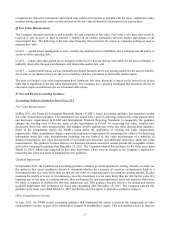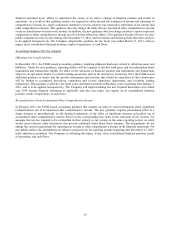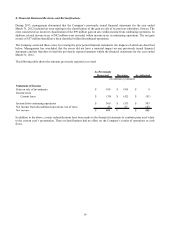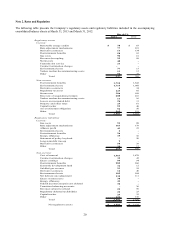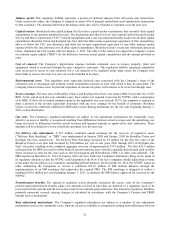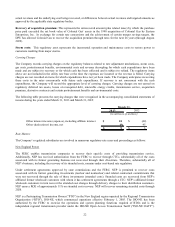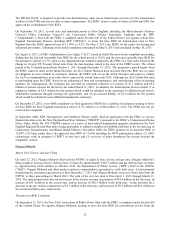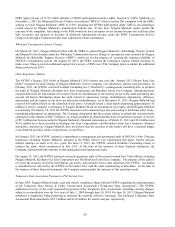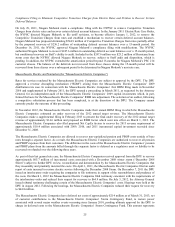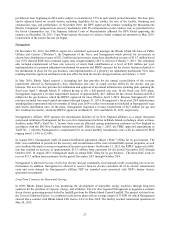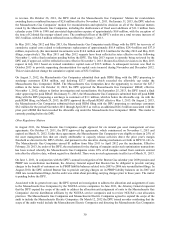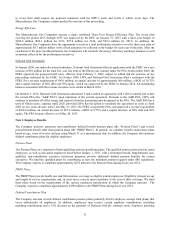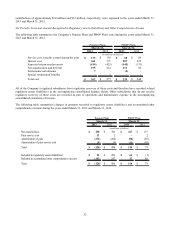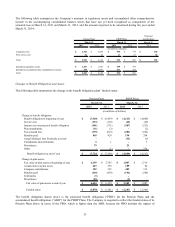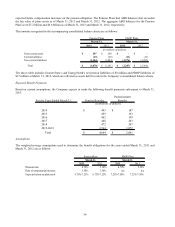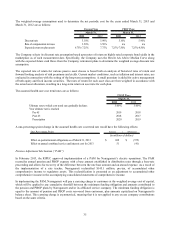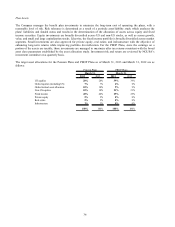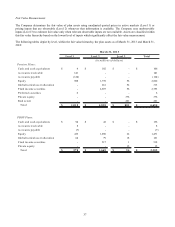National Grid 2013 Annual Report Download - page 28
Download and view the complete annual report
Please find page 28 of the 2013 National Grid annual report below. You can navigate through the pages in the report by either clicking on the pages listed below, or by using the keyword search tool below to find specific information within the annual report.
27
per kilowatt hour beginning in 2014 and is subject to escalation by 3.5% in each annual period thereafter. The base price
can be adjusted based on several factors, including eligibility for tax credits, the size of the facility, financing and
construction costs, and performance. In November 2010, the DPU approved the contract including the Massachusetts
Electric Companies’ proposed cost recovery mechanism with 4% remuneration on the contract cost, as provided for by
the Green Communities Act. The Supreme Judicial Court of Massachusetts affirmed the DPU Order approving the
contract on December 28, 2011. Cape Wind expects the project to achieve initial commercial operation in May 2016.
Construction of the project has not yet begun.
Narragansett
On December 20, 2012, the RIPUC approved a settlement agreement amongst the Rhode Island Division of Public
Utilities and Carriers (“Division”), the Department of the Navy, and Narragansett which provide for an increase in
electric base distribution revenue of $21.5 million and an increase in gas base distribution revenue of $11.3 million based
on a 9.5% allowed ROE and a common equity ratio of approximately 49.1%, effective February 1, 2013. The settlement
also included reinstatement of base rate recovery of storm fund contributions at a level of $4.8 million per year,
implementation of a pension adjustment mechanism for pension and PBOP expenses for the electric business identical to
the mechanism in place for the gas business; and implementation of a property tax adjustment mechanism. New rates
resulting from the approved settlement went into effect for both the electric and gas business on February 1, 2013.
In May 2010, Rhode Island enacted a decoupling law that provides for the annual reconciliation of the revenue
requirement allowed in Narragansett’ s base distribution rate case to actual revenue billed by the electric and gas
business. The new law also provides for submission and approval of an annual infrastructure spending plan spanning the
fiscal year April 1 through March 31 without having to file a full general rate case. In the fiscal year 2013 plans,
Narragansett requested a revenue requirement increase of approximately $4.1 million for the electric business and $5.4
million for the gas business, which the RIPUC approved for rates effective April 1, 2012. Because Narragansett’ s 2012
rate base included forecasted capital investment through January 31, 2014, Narragansett’ s fiscal year 2014 infrastructure
spending plans represented only two months of fiscal year 2014 to reflect investment not included in Narragansett’ s gas
and electric distribution rates. In the plans, Narragansett requested a revenue requirement of $0.7 million for gas and
$12.1 million for electric, which the RIPUC approved on March 21, 2013 and March 22, 2013, respectively.
Narragansett’ s affiliate, NEP operates the transmission facilities of its New England affiliates as a single integrated
system and reimburses Narragansett for the cost of its transmission facilities in Rhode Island, including a return on those
facilities, under NEP’ s Tariff No. 1. In turn, these costs are allocated among transmission customers in New England in
accordance with the ISO New England transmission tariff. Effective June 1, 2007, the FERC approved amendments to
Tariff No. 1 whereby Narragansett is compensated for its actual monthly transmission costs with its authorized ROE
ranging from 11.14% to 12.64%.
In August 2012, Narragansett made its annual distribution adjustment charge (“DAC”) filing for its gas business. The
DAC was established to provide for the recovery and reconciliation of the costs of identifiable special programs, as well
as to facilitate the timely revenue recognition of incentive provisions. On October 31, 2012, the RIPUC approved a DAC
rate that resulted in recovery of approximately $13.3 million from customers for the period November 2012 through
October 2013. In August 2013, Narragansett made its annual DAC filing for its gas business. The latest DAC seeks to
recover $11.7 million from customers for the period November 2013 through October 2014.
Narragansett is allowed recovery of all of its electric and gas commodity costs through a fully reconciling rate recovery
mechanism. In addition, Narragansett is allowed to recover from its electric customers all of its electric transmission
costs and costs charged by Narragansett’ s affiliate NEP for stranded costs associated with NEP’ s former electric
generation investments.
Long-Term Contracts for Renewable Energy
In 2009, Rhode Island passed a law promoting the development of renewable energy resources through long-term
contracts for the purchase of capacity, energy, and attributes. The law also required Narragansett to negotiate a contract
for an electric generating project fueled by landfill gas from the Rhode Island Central Landfill. The project, referred to as
the Town of Johnston Project, is a combined cycle power plant with an average output of 32 MW for which Narragansett
entered into a contract with Rhode Island LFG Genco, LLC in June 2010. The facility reached commercial operation on
May 28, 2013.


